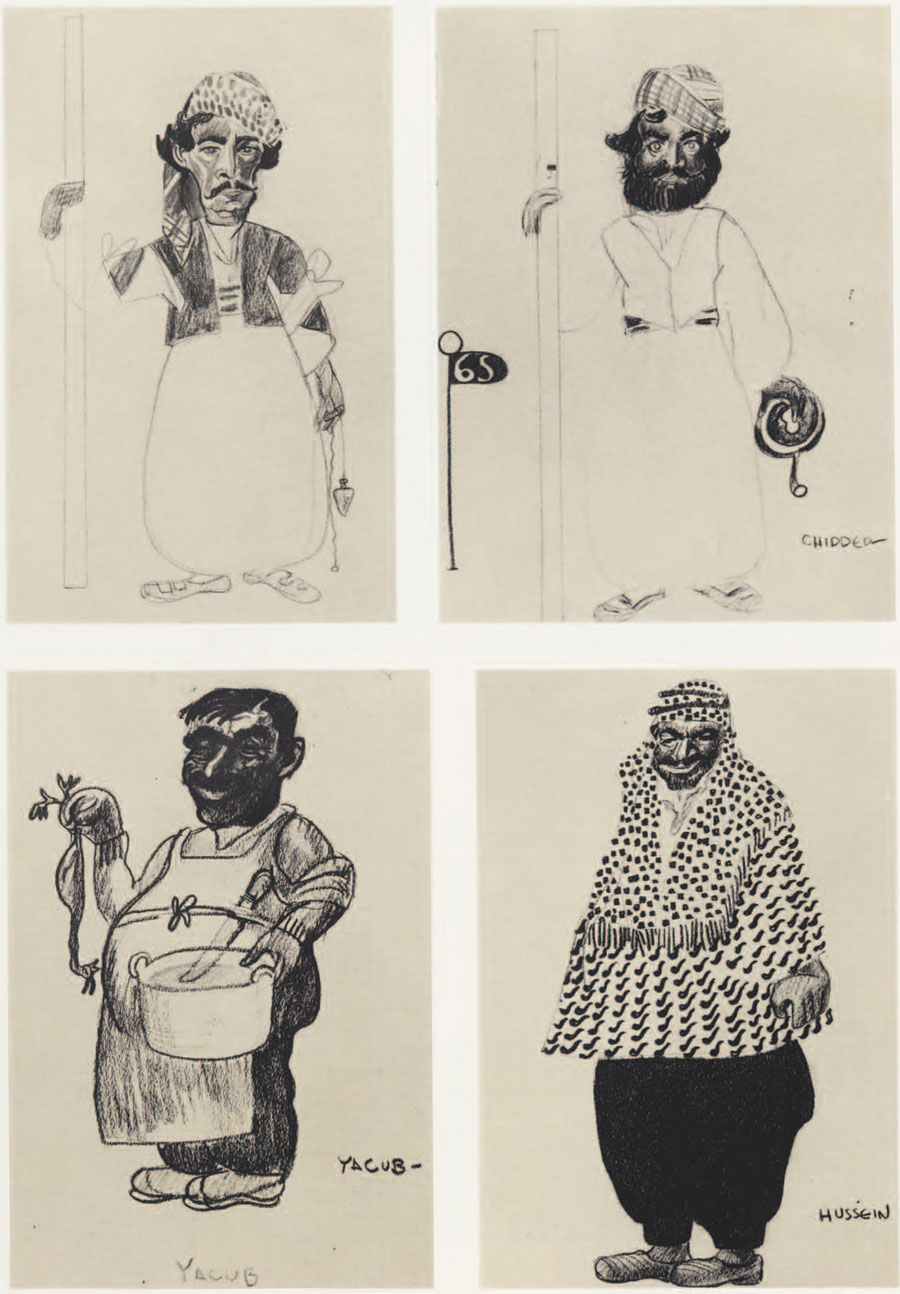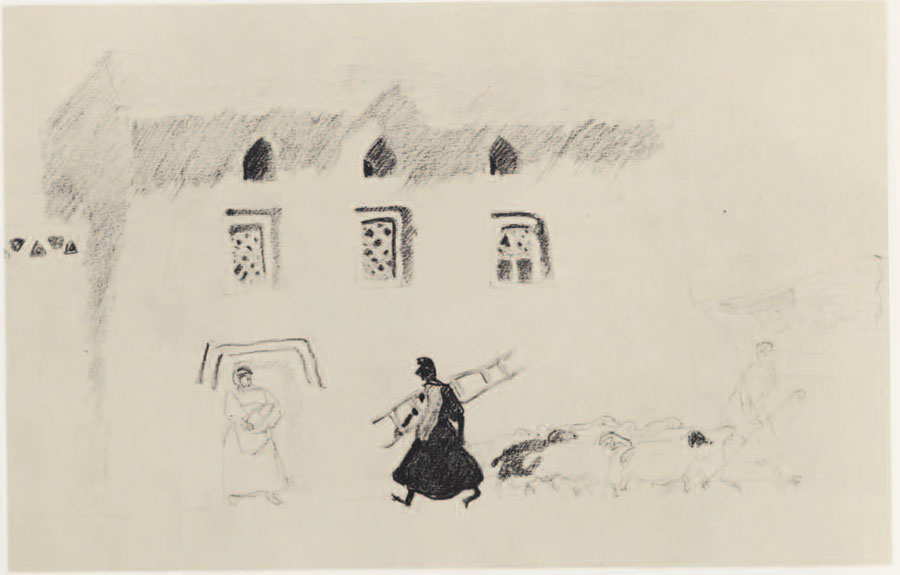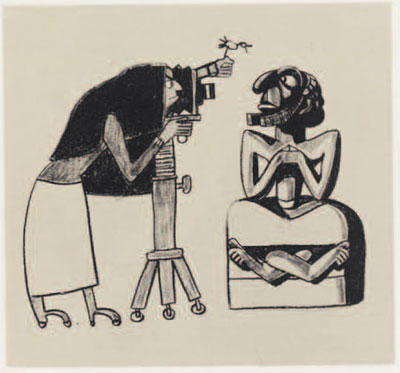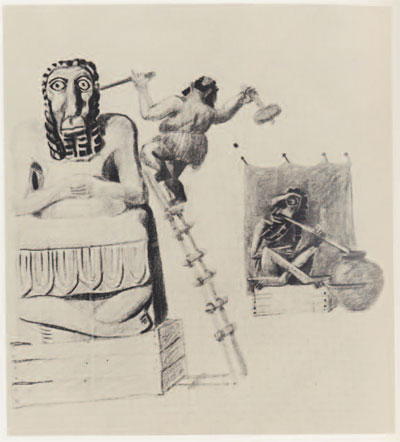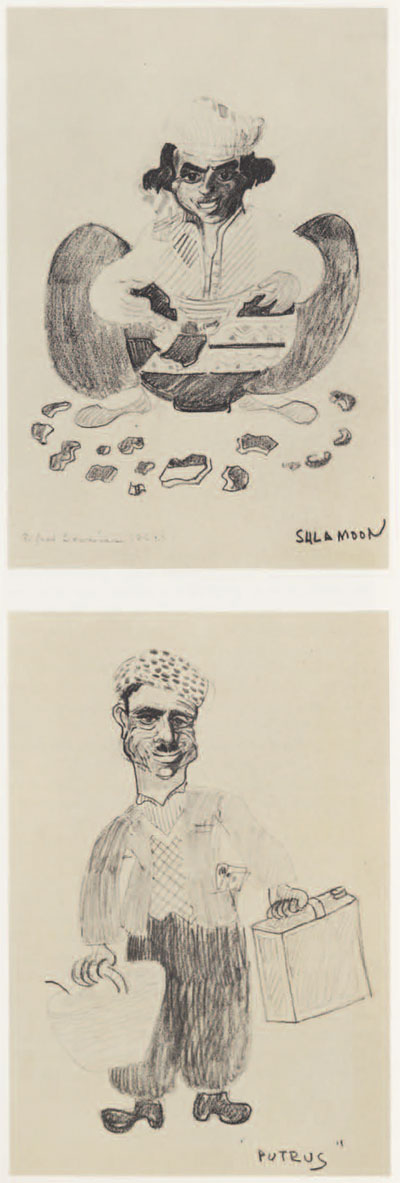
Architect and artist, “Al” Bendiner, as a full generation of The University Museum called him, served at various times on expeditions of the Museum. Before his death in 1964, he had more recently “dug” at Tikal as Artist-Surveyor. His Archaeologist’s Sketchbook appeared in Volume 3, 1960 of this Bulletin.
Recently his widow has generously given the entire series of his Archaeological Cartoons to the Museum for use in its new wing. There are essentially two series, the Tikal group from the early ’60’s and a group from Iraq, done at two sites, Tepe Gawra, near Mosul, and Khafajeh, on the Diyala River just northeast of Baghdad, in 1936-37. Reproduced on the following pages are a series from the Iraq excavations. They leave for us more than a likeness; more a mood, and certainly the spirit and good-humor of an occupation. Through his lively pen, delightful wit, and human approach, he never fails to record the other side of archaeology, the real people, the real places, and the real things.
One of Al’s favorite anecdotes about Tepe Gawra forms a perfect introduction to the drawings that follow: “The Devil-worshipping Yezidi chief who was my guide suddenly asked me, ‘Which is bigger, London or Paris?’ Surprised at the apparent extent of his knowledge, I replied that London was larger. ‘Is London bigger than Baghdad or Mosul?’ he queried. ‘London is bigger than both Baghdad and Mosul combined; in fact, it has three times as many people as the whole Kingdom of Iraq.’ This puzzled him. ‘In the name of my Saints,’ said he, ‘how many tents are there in London, and pray tell me, who live in London, Kurds or Arabs?’ ”
-DAVID CROWNOVER
